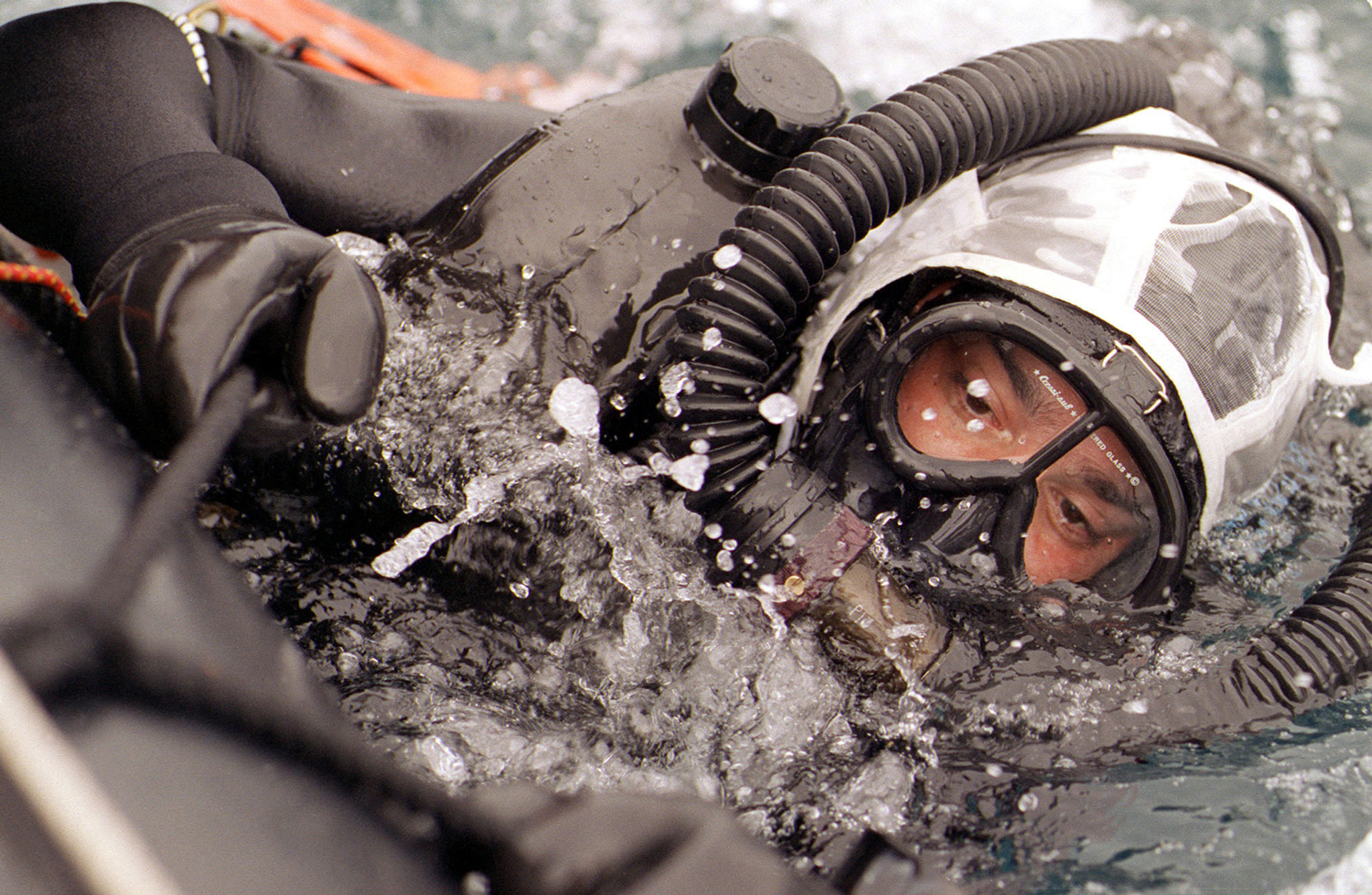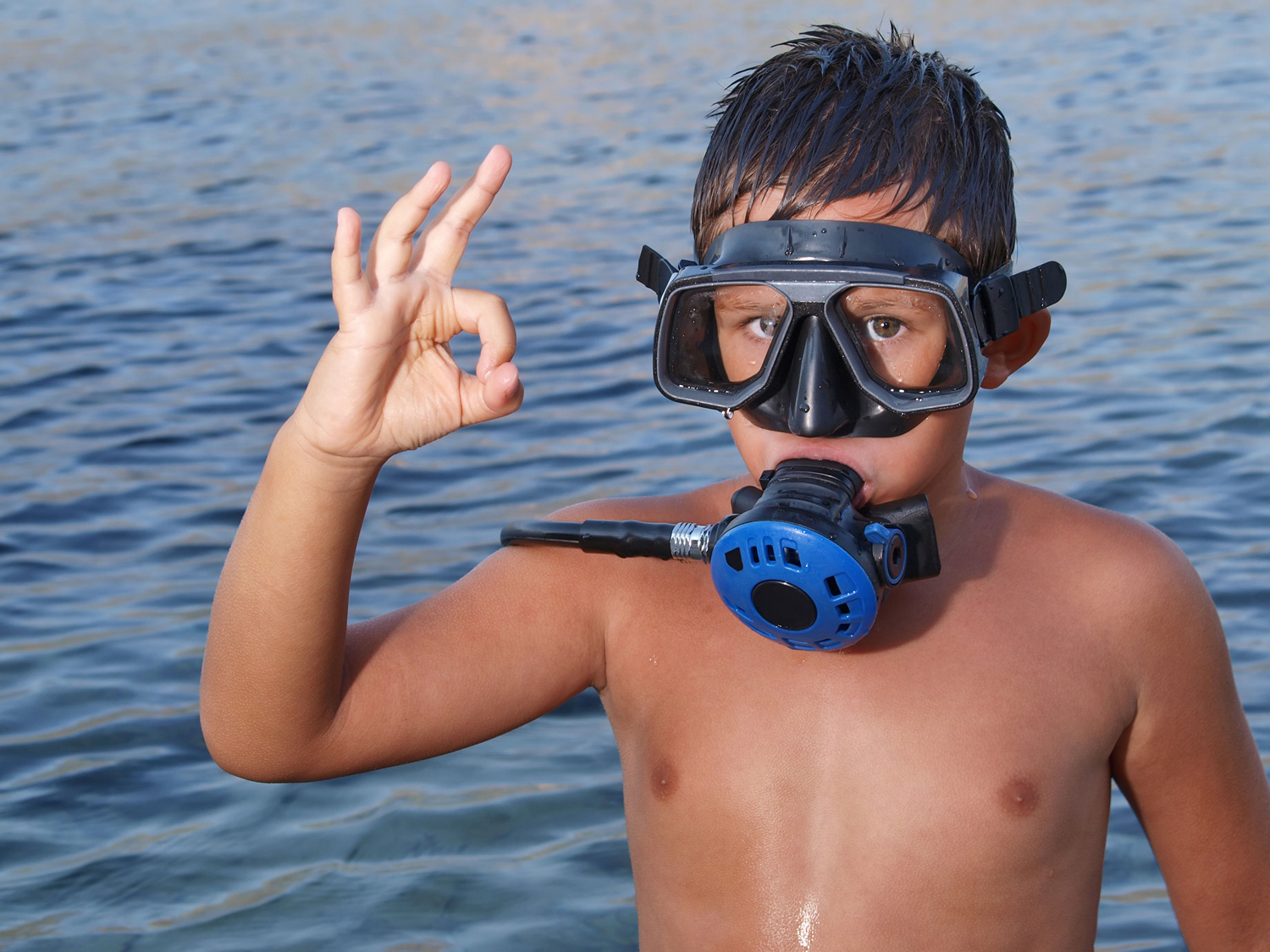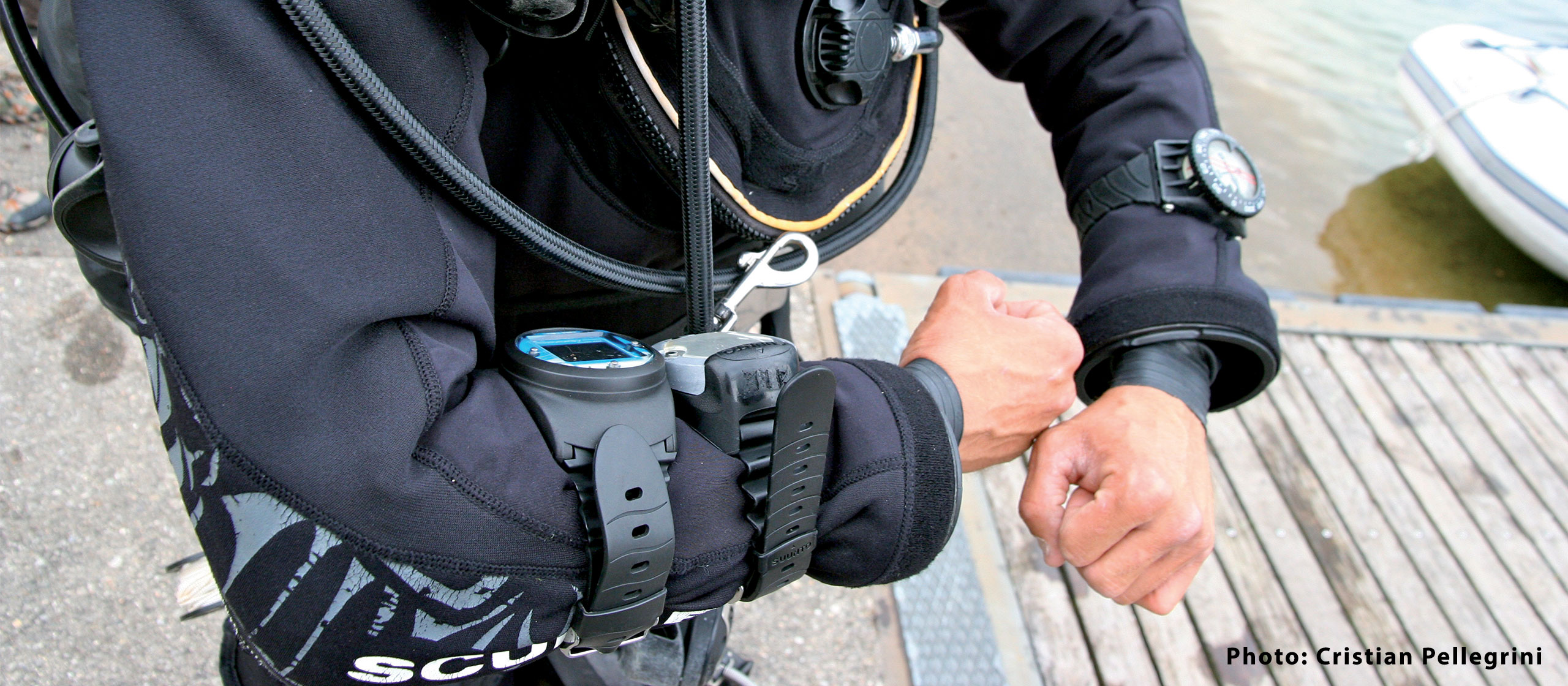Diving beyond recreational limits
Beyond recreational depths, the “technical” diving community pushes the frontier of “recreational” diving steadily to deeper and less-forgiving environments.
Rebreathers, once almost exclusively used by the military, are now commonplace the world over. Blends of helium and EANx are more commonly available than ever, along with the training to use such mixtures. Using long-range scooters, technical divers are reaching further and further into caves, often with decompression schedules that are experimental in nature. Let us now look at some of the consequences of these developments.

Firstly, the clinical manifestations of DCS are often different after breathing multiple gas blends on the way back up from 100m depth. Inner-ear DCS has become widely reported in just the last 25 years and, research has shown, is often associated with the “hole-in-the-heart”, known as a Patent Foramen Ovale (PFO).
Consensus of medical opinion is that the risk of DCS in recreational divers with PFO is between 2.5-6.5 times higher than in divers without a PFO, so the risk is still so small that routine screening for a PFO is not justified. In technical diving however, divers go beyond recreational limits and often require decompression before surfacing. At least one technical diver training agency recommends screening for PFO before engaging in decompression dives.
Rebreathers are typically quite unforgiving if the diver makes an error. These hightech devices require more detailed and exhaustive training, as well as proper maintenance including a far lengthier pre-dive check. For example, if a recreational diver forgets to turn his SCUBA tank valve on then he will realise this when he first attempts to breathe and cannot suck any air. He will then normally be able to surface and have his valve turned on: an incident, not an accident. With many rebreathers however, if the diver forgets to turn on the oxygen cylinder, no immediate consequence follows. The oxygen already in the breathing loop however slowly and unnoticeably gets consumed – until the diver suddenly “blacks out” into unconsciousness and death, even with the mouthpiece in place. This is known to have happened in very shallow water.

While the exact increase in risk over ordinary SCUBA diving is not yet known, the consensus of opinion is that rebreathers have a much higher mortality risk. A recent analysis estimates the increase in fatality risk between 4 and 10 times. Considering that the risk of fatality while diving open circuit is thought to be between 0.6 and 2.1 per 100000 dives, then the absolute risk of death on a rebreather may not be as high as some might expect. Even so, until recently, rebreather diving was specifically excluded from some recreational dive insurance’s coverage. As the situation becomes clearer, rebreather divers are now able to purchase insurance that is equal to that offered to recreational divers.
Another relatively recent development in recreational SCUBA diving is the availability to begin diving at a younger age. At least one major training agency now offers children SCUBA diving lessons from age 10, albeit with depth and supervision restrictions. Meanwhile, research into the effects of diving among children continues. Similarly, though at the other end of the scale, only now that SCUBA has been so widely available for 40 years are we starting to consider the long-term effects of diving. We know that bubbles often form in our bodies even after dives considered “safe”, and that these decompression bubbles cause measurable effects on the cells and function of the endothelium, the inner lining of our blood vessels. Will a lifetime of deep decompression diving cause memory deterioration or other undesirable late effects? A recent article suggested that there might be very minor changes in cognitive functions of recreational divers, however, with no negative effect on their “quality of life”. Nevertheless, there is some limited evidence available in professional divers.

Meanwhile, diving is here to stay and it is easier than ever to learn to dive and, thereafter, to rapidly progress to ever-deeper depths. Dive equipment has never been so affordable either, or so user friendly. Indeed, most modern dive computers will display decompression information, or at least emergency decompression information, for repeated dives well beyond recreational limits. Before dive computers were common, older divers and medical specialists would have assumed, for example, that anyone diving to 50m would know that they best not dive there again in the afternoon, that it is safer to allow at least a full day for their body to desaturate. However, it is not uncommon these days for divers to present to hyperbaric chambers with DCS after exactly such “unsafe” deep, repetitive dives.
While the technology has progressed, there is a growing concern that basic diving knowledge is dropping to lower and lower levels. In many cases, modern dive course students do not even learn about the dive tables anymore, and fail to appreciate the relationship between depth and no-stop time or to learn the rules for exceptional exposures. It is little wonder then, that some divers may be learning these rules for the first time at their local hyperbaric chamber. Even in technical dive courses it has become rarer to learn dive planning with tables and, thus, the newly-minted technical diver might one day find himself unsure what to do when his rechargeable dive computers go flat during a long dive.

Where to next? – The Future
We predict the face-to-face component of diver training will continue to diminish. Over this century the Internet has become so commonplace that diving course students now regularly complete the cognitive development portion of the course online. It is only a matter of time before fully online dive courses become available.
Already at least one rebreather manufacturer is offering online certification for their particular model of rebreather, with no face-to-face component.
It is also plausible that redundancy of specialised diving equipment will be more and more considered, leading to the development of very modular and redundant diving equipment. Such new concepts will probably ease the reconfiguration of equipment underwater in case of non-standard and or emergency situations, allowing technical divers to rely on their equipment even more than now.
Of particular concern to the “old school” technical diver is that the use of dive computers is being adopted as fail-safe for decompression planning. The marriage of PC-based decompression planning software and diver-worn wrist computers has been welcomed by recreational as well as technical divers but this should not mean the fundamentals of dive planning are allowed to be handed over to a computer. A solid grounding in the theory that underpins the relationship between diver´s physiology, physical fitness, depth, time, decompression obligations and gas consumption gives a technical diver the ability to spot weaknesses and flaws in computer-based modelling. While dive computers continue to improve in reliability as well as the approximation of human tolerance for decompression stress, tablebased dive planning should continue as a staple of technical diver training. This is akin to learning the Slide Rule during the earliest availability of the electronic calculator when, until computing power matched the demands of scientists, engineers, etc., it was prudent not to abandon the old ways. We are in a developmental transition phase now and not yet quite ready to totally rely on dive computers. One training agency has even taken a stand against using them, because their success at safe decompression remains to be scientifically evaluated.

Concomitant with this development is the worry that technical divers are swapping to dive computers and automated gas consumption calculations without a commensurate increase in their ability to respond to emergencies when these automated procedures fail the diver. This happens regularly, for example, when divers make repetitive dives to serious depths because “the computer didn’t give any warnings” or when they do not have enough gas for deco and surface earlier than planned because “the computer said I would have enough”. As we transit towards a reliance on technology let us keep sharp those skills that got us this far.
More than one diver has had a total computer failure during deco and pulled out his trusty wet-notes for a contingency plan. Wearing more than one computer should not mean technical divers do not need to cut out-of-gas and contingencydepth plans. The decompression of non-standard dives, (e.g. reverse profiles, yoyo or repetitive diving), commonly seen in cave diving and to some extent also in deep diving, is not yet fully understood and possibly requires re-consideration in the face of new in-field research.
Lastly, as our training and procedures evolve we urge all technical instructors to stay abreast of the latest research and technical developments. This can be done by attending conferences such as EuroTek, Techmeeting and/or OZTeK, reading technical diving magazines and participating in technical dive forums.
So, our last word is: Soak up technical diving knowledge but be aware that not all of it is accurate. Half of what you’ve been taught is probably untrue – unfortunately, it is not yet known which half.
So prudence and conservatism is the only sensible option. It is too much of a pity to have to treat a bent diver who was not aware of the risk he/she was taking when embarking on that dive!
The article is an excerpt from the book “The Science of Diving, Things your instructor never told you”
Published by Lambert Academic Publishing, it can be purchased online here, or can be ordered via any bookstore using ISBN number 978-3-659-66233-1. The book is sold at 49.90 €, and all royalties from the sales are donated to EUBS, to promote further diving medicine research.

